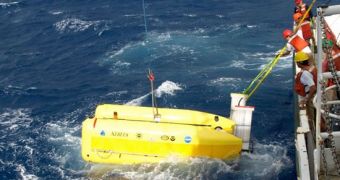Deep sea vents can be found in hydrothermal sites all over the globe but the three new ones discovered in the Mid-Cayman Rise are special. In this unique environment, the vents have special geological features, an intriguing diversity and a unique geographic isolation.
This is the first expedition along the Mid-Cayman Rise to search for deep-sea hydrothermal vents and to actually find three different types of venting. One of them is the deepest hydrothermal vent site ever known, as for the two others, scientists identified one as being a superficial, low temperature vent previously seen once in the mid-Atlantic ocean.
Chief scientists Chris German said: “This was probably the highest risk expedition I have ever undertaken. We know hydrothermal vents appear along ridges approximately every 100 km. But this ridge crest is only 100 km long, so we should only have expected to find evidence for one site at most. So finding evidence for three sites was quite unexpected - but then finding out that our data indicated that each site represents a different style of venting - one of every kind known, all in pretty much the same place - was extraordinarily cool.”
The Mid-Cayman Rise (MCR) is the deepest point in the Caribbean Sea and also a part of the frontier between the North American and the Caribbean Tectonic Plates. In places where Earth’s forces pull the tectonic plates apart, new material comes out from the interior of the Earth and forms a new crust on the seafloor.
Even though vent sites cover small areas of the ocean's floor, hot acidic fluids can rise hundreds of meters. The chemicals, minerals and microbes within dissolve in the water and can travel horizontally for miles. Depending of the original type of vent, the plumes chemical signature can differ.
Co-author Max Coleman of NASA's Jet Propulsion Laboratory, Pasadena, California said that “being the deepest, these hydrothermal vents support communities of organisms that are the furthest from the ocean surface and sources of energy like sunlight. Most life on Earth is sustained by food chains that begin with sunlight as their energy source.
That's not an option for possible life deep in the ocean of Jupiter's icy moon Europa, prioritized by NASA for future exploration. However, organisms around the deep vents get energy from the chemicals in hydrothermal fluid, a scenario we think is similar to the seafloor of Europa, and this work will help us understand what we might find when we search for life there.”
Chris German and his team followed the plumes in order to find the vents and their success is mainly attributed to sensors from robotic vehicles and equipment, that tracked the chemicals back to their source. A water sampling rosette and the hybrid vehicle Nereus was used for this expedition. CTD (conductivity, temperature, and depth) array augmented with sensors to detect suspended particles and anomalous chemical compositions, were mounted on these two devices. The deep-diving robot benefited from the latest technology in sensors, made by Ko-ichi Nakamura from AIST in Tsukuba, Japan.
Researchers hope that explorations of the seafloor and future findings will help them determine the limits of living organisms. This way mankind will have more information when going into space in search for life on other planets. These findings were conducted by Woods Hole Oceanographic Institution (WHOI) in collaboration with NASA, and the results were published in this week's Proceedings of the National Academy of Sciences.

 14 DAY TRIAL //
14 DAY TRIAL //